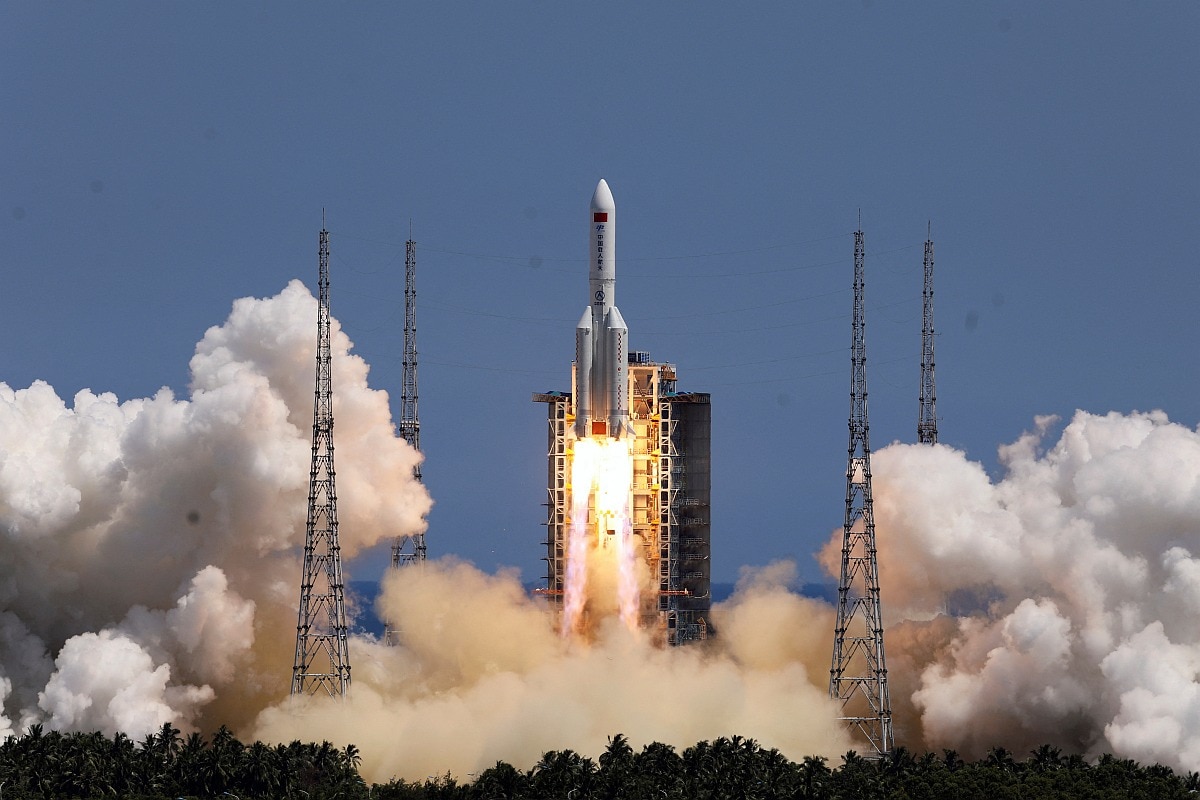Indian Space Research Organisation (ISRO) Chairman S Somnath on Monday said that the Chandrayaan-3- the third edition of India’s mission to the moon- will be launched this July.
Chandrayaan-3 is a follow-on mission to Chandrayaan-2 to demonstrate end-to-end capability in safe landing and roving on the lunar surface.
“I am very confident…” said Somnath today on the lunar mission.
The ISRO chairman was speaking after the space agency successfully placed the NVS-01, the first of the second-generation satellite series, into geosynchronous transfer orbit. The Geosynchronous Satellite Launch Vehicle deployed the NVS-01 navigation satellite from the second launch pad at the Satish Dhawan Space Centre (SDC SHAR) in Sriharikota in Andhra Pradesh.
Speaking to ANI, Somanath said, “The lesson is very simple. Learn from the past, and do what is possible with your capacity. Failures may happen. There are a thousand reasons for a rocket to fail. Even today, this mission could have failed. But we have to do what is needed to be done”.
Meanwhile, the Chandraayan-3 mission consists of an indigenous lander module a propulsion module and a rover with an objective of developing and demonstrating new technologies required for Inter planetary missions.
According to ISRO, the three mission objectives of the Chandrayaan-3 are- to demonstrate safe and soft landing on lunar Surface; to demonstrate Rover roving on the moon and to conduct in-situ scientific experiments.
It will be launched by the LVM3 rocket from SDSC SHAR centre in Sriharikota. The propulsion module will carry the lander and rover configuration till 100 km lunar orbit, according to ISRO.
The propulsion module has Spectro-polarimetry of Habitable Planet Earth (SHAPE) payload to study the spectral and Polari metric measurements of Earth from the lunar orbit.
The Lander will have the capability to soft land at a specified lunar site and deploy the Rover which will carry out in-situ chemical analysis of the lunar surface during the course of its mobility. The Lander and the Rover have scientific payloads to carry out experiments on the lunar surface.
The main function of the Propulsion Module is to carry the Lander Module from launch vehicle injection till final lunar 100 km circular polar orbit and separate the Lander Module from the Propulsion Module.
Apart from this, the Propulsion Module also has one scientific payload as a value addition which will be operated post separation of Lander Module.
The launcher identified for Chandrayaan-3 is GSLV-Mk3 which will place the integrated module in an Elliptic Parking Orbit (EPO) of size 170 x 36500 km.
The Chandrayaan is an ongoing series of lunar space exploration programme of the ISRO. Chandrayaan-1, the first lunar probe of ISRO, in 2008-09 found water on the moon. The Chandrayaan-2 was launched in July 2019 and successfully inserted into orbit in August 2019. However, minutes its lander crash-landed on the moon after losing communication with the ground stations.
Earlier in the day, the ISRO Chairman Somnath congratulated the whole ISRO team after the successful launch of NVS-01.
“I would like to congratulate everyone on the outcome. The satellite is placed in the precised orbit. Congratulates to the entire ISRO for making this mission happen,” ISRO Chairman Somnath said in a press conference.
He appreciated the fact that the mission was accomplished after doing the rectifications after suffering a debacle during the last mission.
“This mission GV-F12 came after the debacle that happened in the F-10 mission where there was an issue in the cryogenic stage and the cryogenic engine could not get accomplished. I am very happy that the correction and modification at the cryogenic stage were done and we learnt the lessons to make our cryogenic stage more reliable. I want to specifically congratulate the entire ‘Failure Analysis Committee’ who went through this and made our life much better and also for the Liquid Propulsion System,” he said.
Somnath added, “Today the Navigation Satellite NVS-01 is the second generation of navigation satellite with additional capabilities that we have already brought into the satellite constellation where we make the signals more secure. We made a civilian frequency band L-1 and also introduced our Atomic Clock. And this is one of the five series of satellites with new configurations that are to be launched. I would like to thank all those who worked for this satellite and make the mission a grand success”.
Appreciating the government support, the ISRO Chairman also thanked the authorisation of the GSLV launch despite a failure during the last attempt.
“The confidence of the decision makers, our honourable Prime Minister Narendra Modi and other key functionaries who reviewed it to see that we have done the required work. The Navic Constellation is something very crucial for the nation to have a regional navigation constellation. I take this opportunity to tell you that we are going to make this Navic system fully functional and operational for the benefit of this nation,” he said.
He further said that the satellite is currently in Geosynchronous Transfer Orbit, from where it is the responsibility of the satellite team to correctly place it in the orbit.
Apprising about the future missions of ISRO, Chairman Somnath said, “In the coming months, we are going to launch PSLV as well as GSLV Mark-3. We are also going to launch the test vehicle of the Gaganyan (Man mission). Of course, the launches of further PSLV and SSLV are also in line”
“We are having the next launch of GSLV with a Climate and weather observation satellite called INSAT-3DS, which will be happening soon. And after that, the same rocket is bound to take NISR – India Nasa Synthetic Alergic Radar Satellite as well,” he added.






